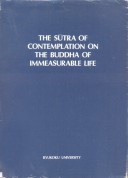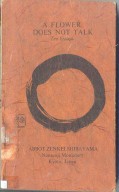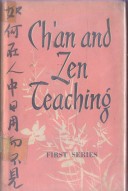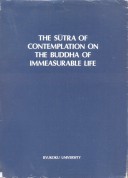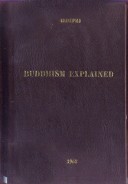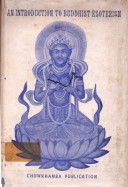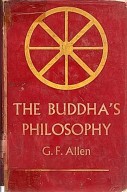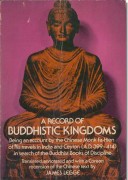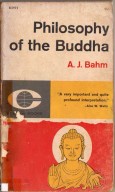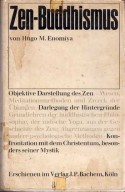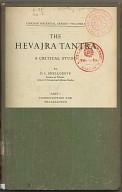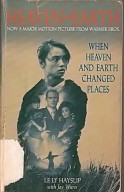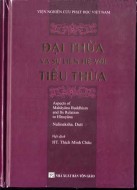Tìm Sách
Sách tiếng Anh-English >> Warm Smiles from Cold Mountains
Thông tin tra cứu
- Tên sách : Warm Smiles from Cold Mountains
- Tác giả : Reb Anderson
- Dịch giả :
- Ngôn ngữ : Anh
- Số trang : 173
- Nhà xuất bản : Rodmell Press-California
- Năm xuất bản : 1994
- Phân loại : Sách tiếng Anh-English
- MCB : 1210000008198
- OPAC :
- Tóm tắt :
CONTENTS
Acknowledgments
Foreword by Susan Moon
PART ONE: PRACTICING DEEPLY
Great Wisdom Beyond Wisdom Heart Sutra
ONE-The Acupuncture Needle of Zazen
TWO-A Ceremony for the Encouragement of Zazen
THREE-A Field Far Beyond Form and Emptiness
FOUR-Sitting in the Heart of Suffering
FIVE-The Five Skandhas
SIX-Just Sitting
PART TWO: EMBRACING ALL BEINGS
The Sixteen Great Bodhisattva Precepts
SEVEN-Speaking the Unspoken
EIGHT-Life Is Not Killed
NINE-The Home Altar
TEN-Just This Person
ELEVEN-Longing for Oneness
TWELVE-Cooking in the Cauldron of All Beings
PART THREE: TIME AND SEASON
Song of the Jewel Mirror Samadhi
THIRTEEN-Warm Smiles from Cold Mountains
FOURTEEN-Suchness
FIFTEEN-Listen to the Body
SIXTEEN-The Path of Peace Has No Sign
SEVENTEEN-Fathers Day
EIGHTEEN-The End of Suffering: A Christmas Koan
APPENDIX
Notes
Appreciations
ACKNOWLEDGMENTS
Innumerable beings contributed directly and indirectly to this little book. I thank them all and, in particular, I want to name a few of them. Throughout the years, many inspiring and patient students and teachers of Zen have invited me to speak about something that is vital to me: the practice of Zen meditation. Those who wanted to make these talks available to a wider audience encouraged me to put them in written form and gather them into a book. Meiya Wender provided the initial impetus for this project, did much of the editing, and generally expedited the production of the first edition. Susan Moon was the principal editor of the first edition, selecting, editing, and arranging the entire manuscript. The first edition was designed by Rosalie Curtis.
For the second edition, I added Chapter Two, “A Ceremony for the Encouragement of Zazan.” Donald Moyer edited this edition, suggesting the current order of chapters and the division of the manuscript into three sections. Setsuan Godwin and Charlie Pokorny made many editorial improvements throughout the manuscript. Diana Gerard provided invaluable overall assistance, from footnoting various sources to acquiring permission for reprinting quotations. Katherine L. Kaiser copyedited the second edition of this book.
Many other people have transcribed and edited these talks throughout the years. I would especially like to thank the people who helped me to edit the earlier versions of these talks that appeared in San Francisco Zen Centers publication Wind Bell: Shosan Austin, Peter Bailey, Rusa Chiu, Sonja Gardenswartz, Jane Hirshfield, Michael Katz, Myo Lahey, Jeffrey Schneider, Furyu Schroeder, Laurie Senauke, Meiya Wender, and Michael Wenger. Leslie Boies edited “Fathers Day,” and Susan Moon edited “The Acupuncture Needle of Zazen” and “Life Is Not Killed,” all of which originally appeared in Turning Wheel: Journal of the Buddhist Peace Fellowship.
Lastly, I would like to thank my daughter Thea Anderson, for teaching me to be a father by insisting on being herself, and Rusa Chiu, for her immeasurable and undefinable contribution.
I bow deeply to you all.
Reb Anderson
Green Dragon Temple
Green Gulch Farm
Muir Beach, California
October 1998
FOREWORD
The book in your hand, a sheaf of white leaves with black markings on them, started out as a voice—the voice of Reb Anderson—speaking in a Zen temple. The chapters were originally dharma talks, given at Tassajara Zen Mountain Center, Green Gulch Farm, or The City Center, some of my favorite places in the world. I would like to set the stage for you, tell you a little of what you cannot know from the words on the page: the smells, the sounds, the bodily experience.
I had the good fortune to be a monk at Tassajara a couple of winters ago, and to hear some of these talks when they were first given, down in that valley, deep in the mountains. During the winter practice period, lectures are scheduled for midmorning. The zendo is cold. The sun is up, but its light doesn’t yet reach down the valley to warm the zendo roof. The morning dew is still dripping off the eaves.
The stream outside the zendo sings a constant song, like breath, swelling or softening according to the rains. The caw of blue jays punctuates Reb’s words. Well- trimmed kerosene lanterns around the room burn steadily, reflecting off polished wood. And the people around the room, sitting on raised platforms in our black robes, we are lanterns, too, burning our calories, breathing our way from moment to moment, a family of us, become intimate through the long months of sitting together in these quiet mountains, this protected space.
Even inside the zendo, you can smell the freshness of the mountain air. And, of course, you smell incense. If the lecture lasts a long time, longer than the schedule says, then the kitchen crew has to leave before it s over to fix our lunch. So while they cook for us, we listen, for them. The jays outside grow noisier, greeting the sun as it reaches down into the valley.
Some of the talks were given at Green Gulch Farm. Green Gulch is another valley, a valley by the sea, where the air is moist and soft. Sometimes, in the zendo, you can hear the ocean waves. You can hear frogs peeping in the nearby pond, and sometimes the distant swoosh of a car passing up on Route One. At both Tassajara and Green Gulch, the listeners are nestled together in a valley, in a bowl, in the palm of Buddhas hand.The words of the lecture, along with the frogs, along with the rattle of the garbage truck, are filling a silver bowl with snow, pouring milk into milk.
Reb offers himself up in his talks, like the stream. There is something devotional about the way he speaks, a willingness to make contact in each moment. He sits upright. His voice is gende, but remarkably intense for its softness. Sometimes he speaks slowly, sometimes in a flood of words, and always as if there is all the time in the world. And there is. He pauses, he looks out at us, he asks from time to time, “Are you with me?” “Are you hungry?” “Shall we sing a song?”
The words blend, seamlessly, with the jays, so that the jays, too, are saying, “Listen to this body. Life is not killed.”
He is demanding. He asks us to stretch our understanding to the limit. “Approaching colors is not just the colors being the colors, but you approaching them. This is misery.” What does he mean? Black cushions, gleaming brown wood reflecting lantern light, the green of someone’s sock, peeking out from under her robes. Or, through the open door, a pink explosion of crab apple. “But if we do not approach these phenomena, if there is no seam between them and us, then these very same skandhas, these very same colors and sounds, are bliss.”
Because we’re all in the soup together, Reb brings in all of our stories. Some of the stories are about himself: about a dog he had as a kid, about what it feels like to be a father, about cleaning up his desk. He mixes the old Zen teaching stories of the ancestors with stories, of students and friends. We hear about Good Servant, who sees his reflection in a river and is enlightened. We hear of an anxious monk at Tassajara who comforted herself by chopping turnips. We hear the story of Dogen walking around a pillar before his death, and the story of a student who was worried about her loud swallowing during zazen. All these stories are equally worthy.
Now the talks have become chapters in a book, and more people can read them. But the words still have the immediacy of Reb’s voice. We can still feel his wholeheartedness, his commitment to sharing himself with his listeners and now with his readers. He does not hold back. And he calls forth our deep response, as well. Again and again, he reminds us that were intimately connected and already Buddha. “Each of you—not separately, but in the cauldron with all beings, cooking and being cooked—is realizing awakening.”
Susan Moon
Berkeley, California
August 1994
 Facebook
Facebook
 Google
Google
 Google+
Google+

